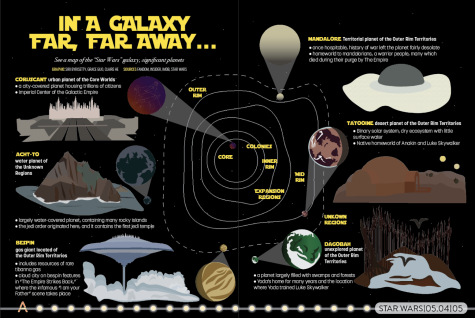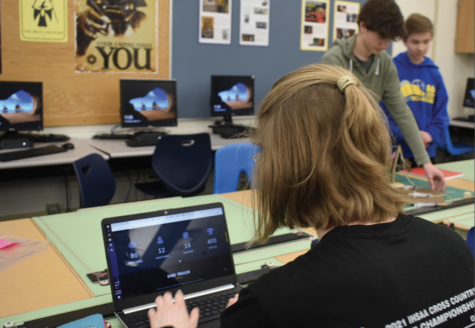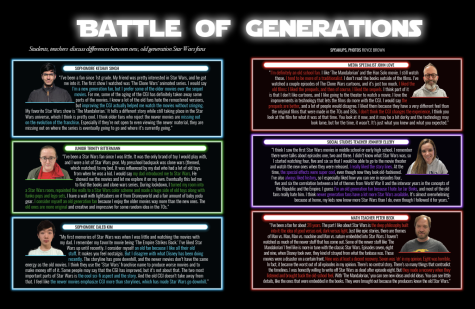New “Star Wars” movies use better technology
Having watched both the original films and the new series from “Star Wars,” the new “Star Wars” movies, simply put, are better than the old movies. Not in terms of plot, or the story itself, but in terms of what makes a movie immersive. The cinematography, VFX and actors were all better. The scenery, and especially the action sequences of the new sequel, are more refined and show the improvements in editing technology after the original movies. The camera work and editing on the new movies are obviously better too, and those factors play a large role in the way audiences view the movies.
 First off, the immersiveness and realism of the new movies are massively improved compared to the originals, which is important when audiences try to suspend their reality. Although the new series doesn’t have as many planets or diversity as the original films, the new planets Disney has created are higher quality and have an overall better look and feel compared to the original settings. By no means does this mean the original series was bad, nor does it mean they were supremely inferior to the new movies, but it does mean that the technological advances in the Disney era made it just that much more interesting to an extent that the new movies became better. While it is true that the new movies absolutely needed the old movies to exist in the first place, the expansion of the old plot, massively improved computer aided visual effects, and the better acting make the new movies a large generational improvement over the old. The improved visuals, which make up a large part in the Star Wars movies and shows, have drastically improved. Obviously, the movies have looked better with time, however, evident improvements do not detract from the movie itself.
First off, the immersiveness and realism of the new movies are massively improved compared to the originals, which is important when audiences try to suspend their reality. Although the new series doesn’t have as many planets or diversity as the original films, the new planets Disney has created are higher quality and have an overall better look and feel compared to the original settings. By no means does this mean the original series was bad, nor does it mean they were supremely inferior to the new movies, but it does mean that the technological advances in the Disney era made it just that much more interesting to an extent that the new movies became better. While it is true that the new movies absolutely needed the old movies to exist in the first place, the expansion of the old plot, massively improved computer aided visual effects, and the better acting make the new movies a large generational improvement over the old. The improved visuals, which make up a large part in the Star Wars movies and shows, have drastically improved. Obviously, the movies have looked better with time, however, evident improvements do not detract from the movie itself.
Second, the execution of the ideas of the sequels both look better and were played better, and even though the plot of the main movies overall were less developed, the improvements justify a lower quality plot. While it is true that the new movies rely on the old trilogy, as long as the movies are improved, the legacy made from the movies do not matter. Not only this, the new shows that Disney produced such as “The Mandalorian” and “The Book of Boba Fett” greatly expand on the old plots and general “Star Wars” lore, and those shows make up for the lack of plot development the sequels had. Even though other Disney shows like “Rebels” were not as good, they still developed massive plot lines and helped evolve the already deep backstory that the originals had.
Third, the development of the characters in the new trilogy, while not as fleshed-out as the originals, are still more than enough, and while some aspects of the new trilogy may not meet the same standard that the originals did, they are still acceptable. To be fair, the performances from Harrison Ford and Carrie Fisher were great, but the acting from Adam Driver and Daisy Ridley is simply brilliant. Although the characters created in the original movies were far more interesting than the new, the way the new actors portray the story make them arguably just as good as the old.
Numerous people complain that because some of the ideas in the new movies do not meet certain standards that were seen in the originals, it automatically makes the new movies worse, although true to the extent that they may not create the same legacies as the old, does not mean that they are objectively worse. Even with some films falling short, others such as “Rogue One,” and “Solo,” both bring complex characters, more developed plots, and improvements in which Disney did not originally incorporate into the new movies.
Despite the lesser aspects of the new plots and characters, the positives justify the negatives to make the new movies enough of an improvement to be seen as an improvement to the originals.







